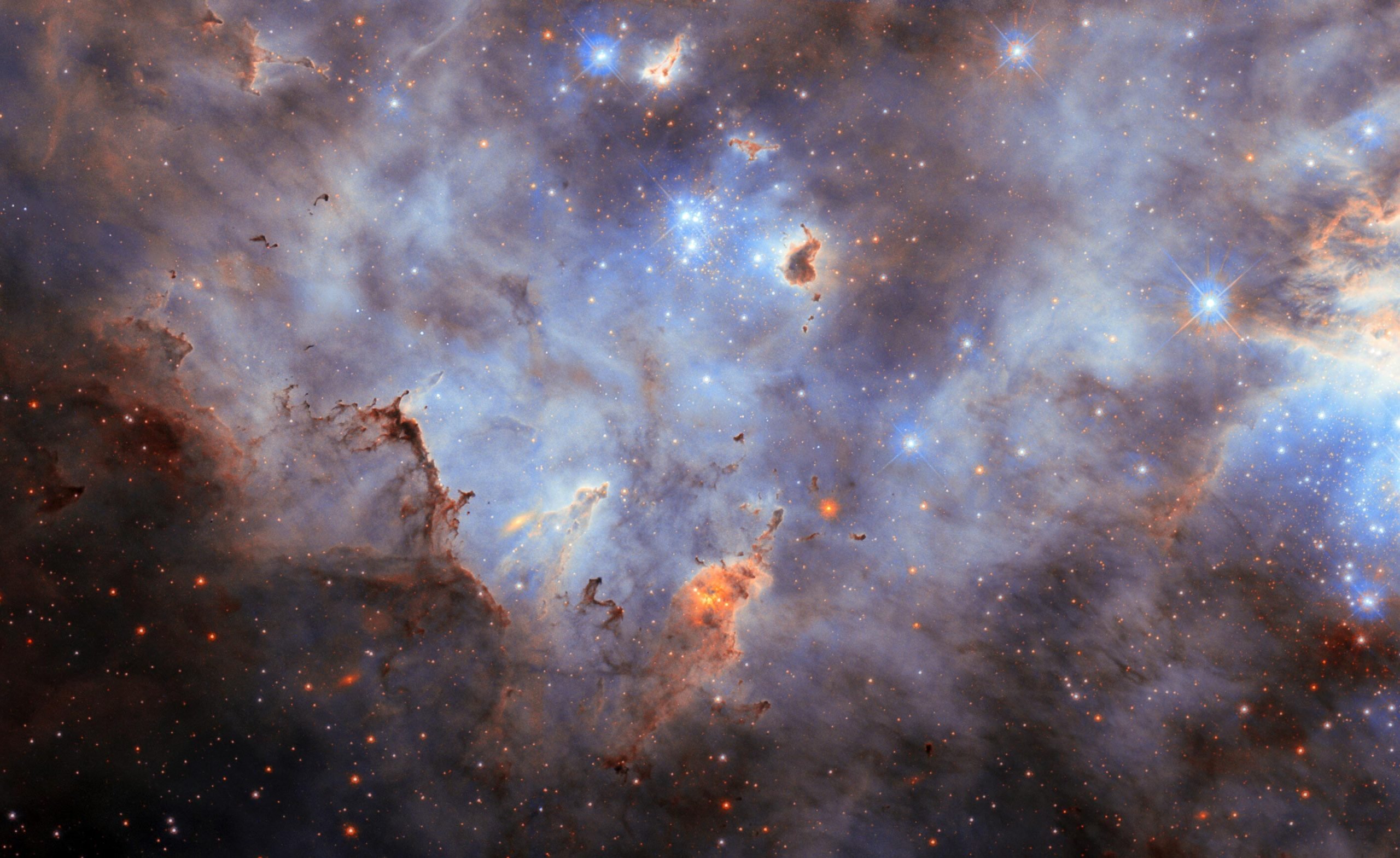Hubble’s Dazzling Portrait of Baby Stars Lighting Up a Cosmic Cloud

Hubble’s latest view of the Large Magellanic Cloud unveils a dazzling star cluster filled with glowing gas and newborn stars.
A Cosmic Portrait in the Large Magellanic Cloud
This week’s Hubble Space Telescope Picture of the Week showcases a misty panorama of stars within a striking cluster. The view comes from the Large Magellanic Cloud, a dwarf galaxy positioned about 160,000 light-years from Earth in the constellations Dorado and Mensa. Containing a mass estimated at 10-20% that of the Milky Way, the Large Magellanic Cloud is the largest of the many smaller galaxies that orbit our own.
Stellar Nurseries and Star-Birth in N11
Within the Large Magellanic Cloud lie several vast star-forming regions, where giant clouds of gas gather and collapse to create new stars. The image highlights part of N11, the galaxy’s second-largest stellar nursery. (The Tarantula Nebula, which holds the title as the most extensive and active star-forming region in the Large Magellanic Cloud, is another well-known Hubble target.) Here, brilliant young stars illuminate the surrounding gas and reshape nearby dust clouds with intense ultraviolet light.
Hubble’s Longevity and Stellar Cataloging
This image marries observations made roughly 20 years apart, a testament to Hubble’s longevity. The first set of observations, which were carried out in 2002–2003, capitalized on the exquisite sensitivity and resolution of the then-newly-installed Advanced Camera for Surveys (ACS). Astronomers turned Hubble toward the N11 star cluster to do something that had never been done before at the time: catalogue all the stars in a young cluster with masses between 10% of the Sun’s mass and 100 times the Sun’s mass.
The second set of observations came from Hubble’s newest camera, the Wide Field Camera 3 (WFC3). These images focus on the dusty clouds that permeate the cluster, offering a new perspective on cosmic dust.
Never miss a breakthrough: Join the SciTechDaily newsletter.
Source link

